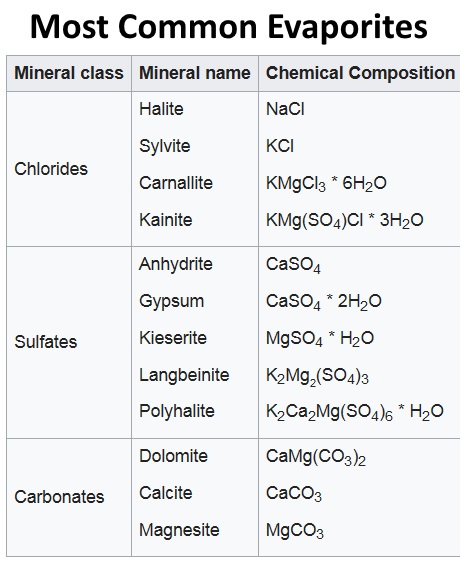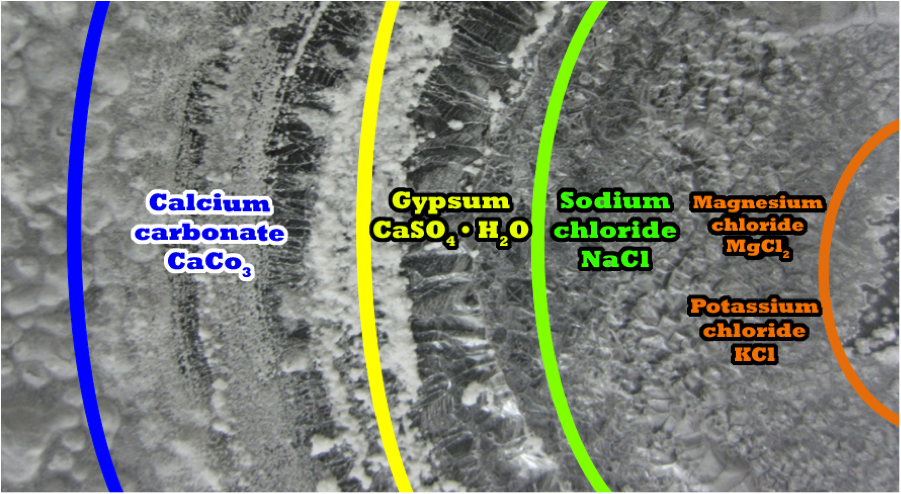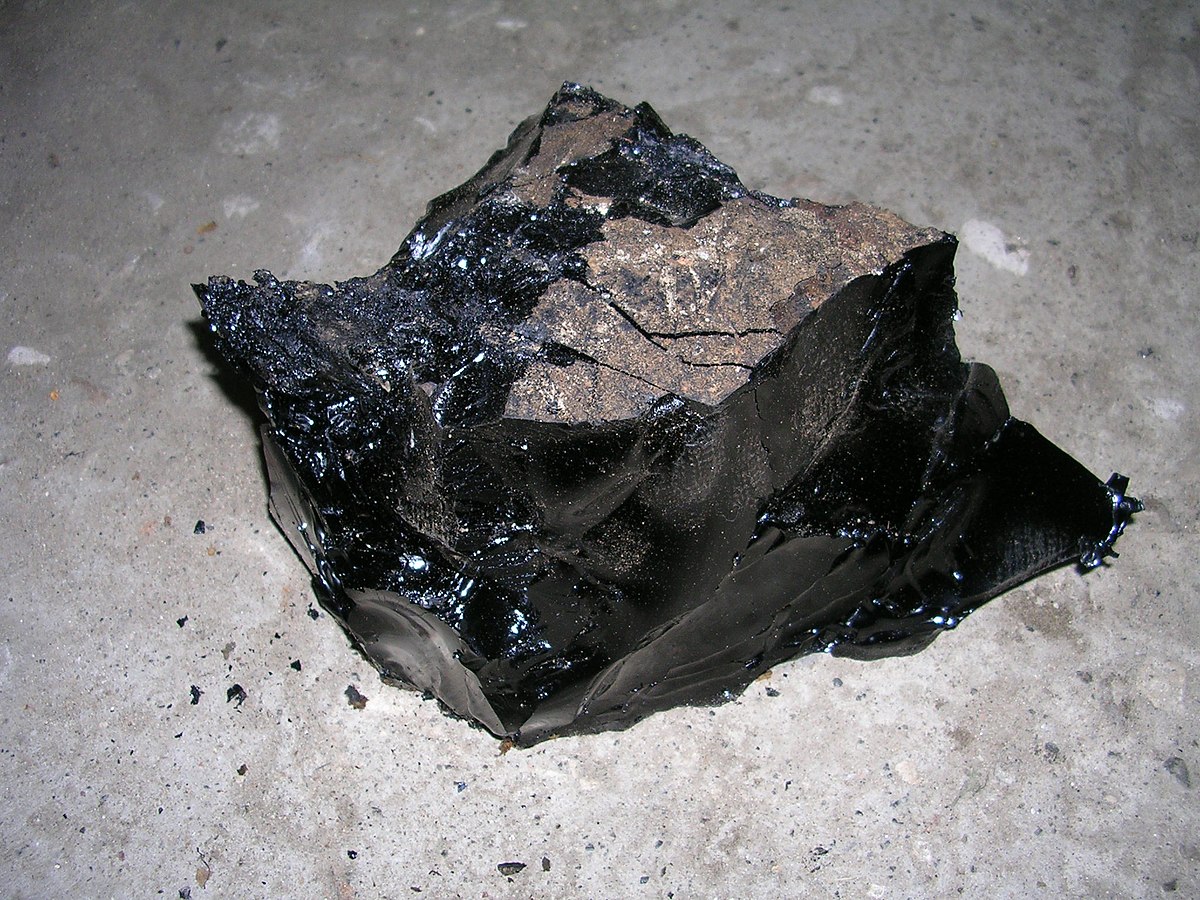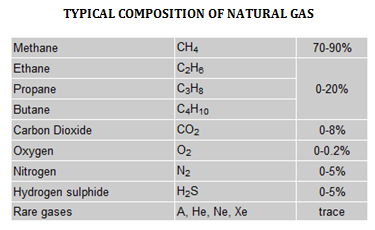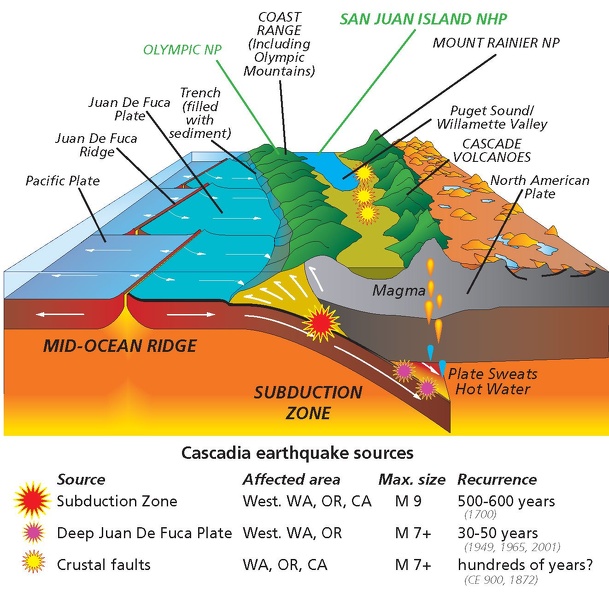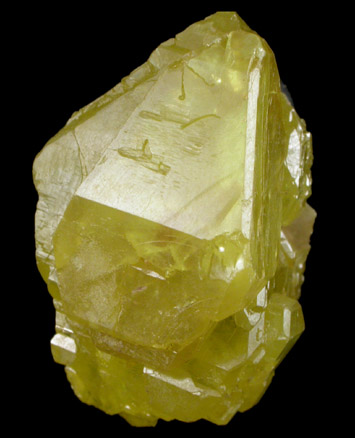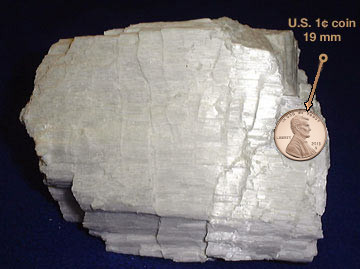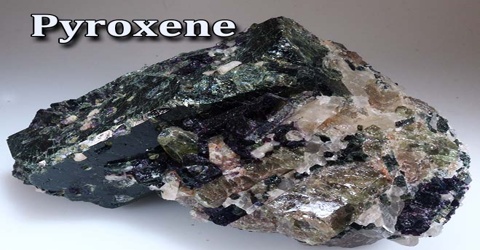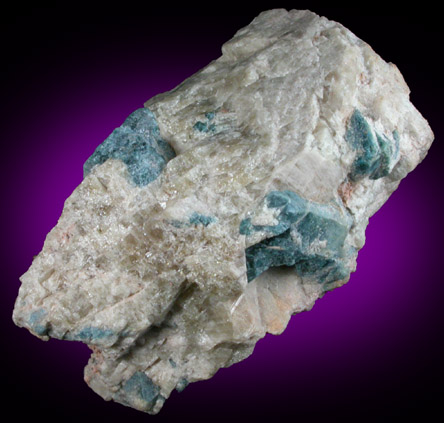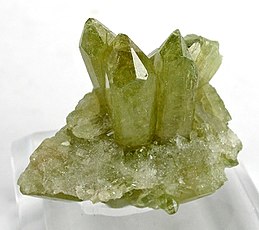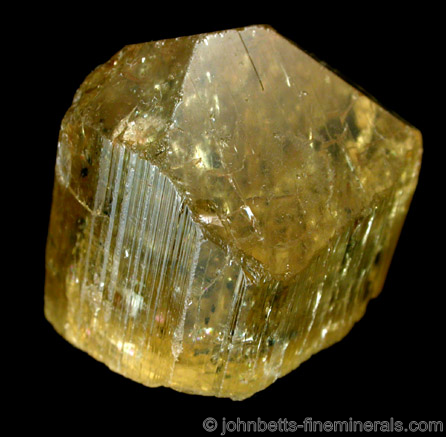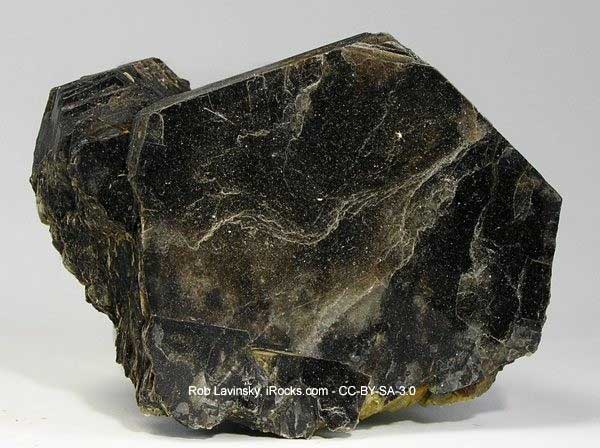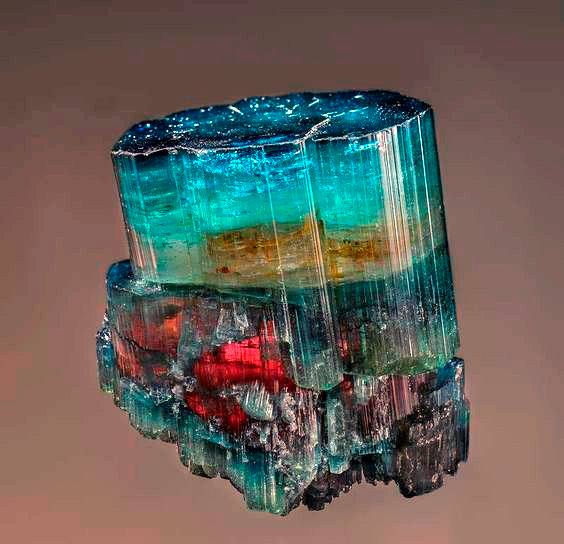Post by 1dave on Jan 31, 2018 7:52:27 GMT -5
QAPF, stands for "Quartz, Alkali feldspar, Plagioclase, Feldspathoid (contraction = Foid)" The feldspathoids are a group of tectosilicate minerals which resemble feldspars but have a different structure and much lower silica content.
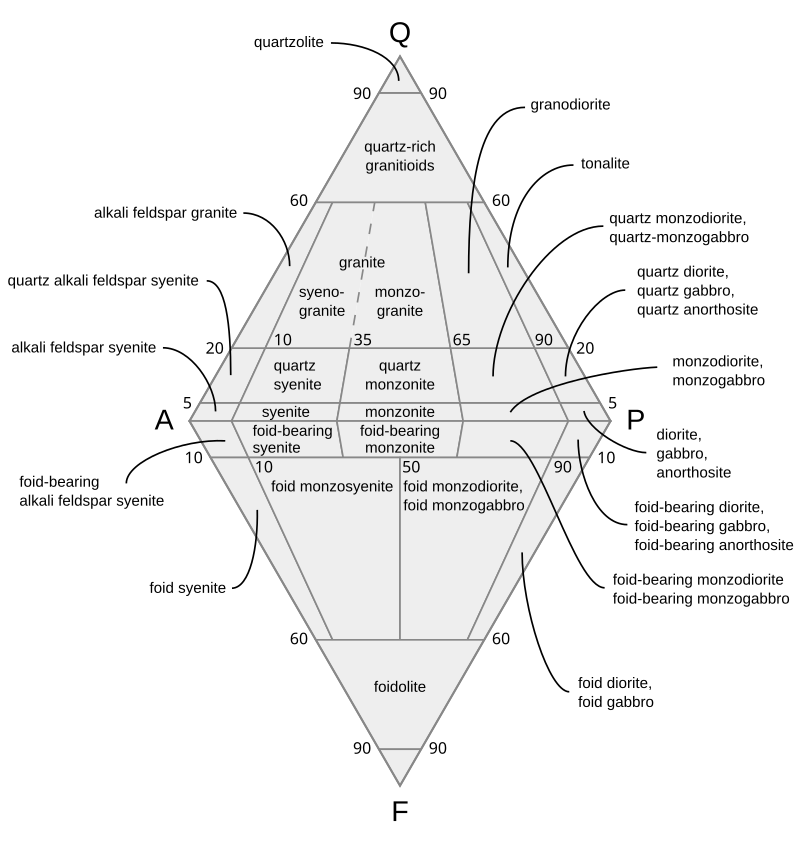
Minerals are formed in three different ways.
1. From Fusion, 2. From Solution, 3. From Vapor.
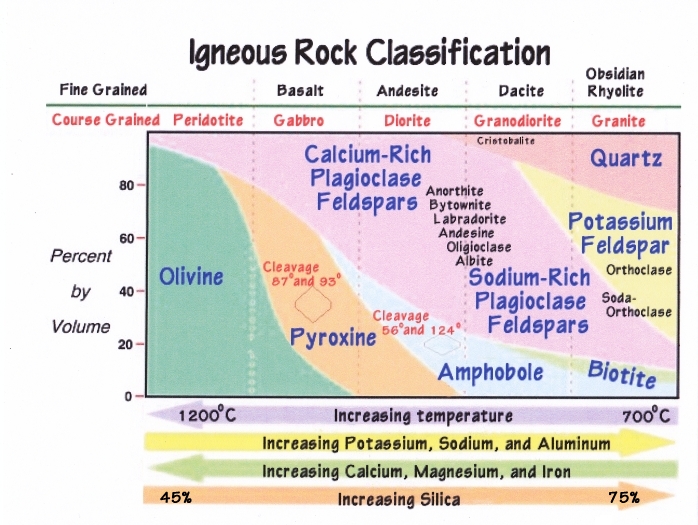
Igneous Rocks
An excellent source of information is The University of Auckland New Zealand.
\https://flexiblelearning.auckland.ac.nz/rocks_minerals/index.html
Andesite - an extrusive rock intermediate in composition between rhyolite and basalt. Andesite lava is of moderate viscosity and forms thick lava flows and domes. The word andesite is derived from the Andes Mountains in South America, where andesite is common. Andesite is the volcanic equivalent of diorite.
Mineral content - groundmass generally of pyroxene (augite) and plagioclase, possibly with minor amounts of amphibole (hornblende) and glass; phenocrysts of plagioclase and often pyroxene, occasionally olivine or amphibole.
Silica (SiO2) content - 52%-63%.
Basalt - a mafic extrusive rock, is the most widespread of all igneous rocks, and comprises more than 90% of all volcanic rocks. Because of its relatively low silica content, basalt lava has a comparatively low viscosity, and forms thin flows that can travel long distances. It is also found as intrusive dikes and sills. Many moon rocks brought back by Apollo astronauts are of basaltic composition. Basalt is the volcanic equivalent of gabbro.
Mineral content - groundmass generally of pyroxene (augite), plagioclase and olivine, possibly with minor glass; if porphyritic the phenocrysts will be any of olivine, pyroxene or plagioclase.
Silica (SiO2) content - 45%-52%.
Dacite - a felsic extrusive rock, intermediate in composition between andesite and rhyolite. It is often found associated with andesite, and forms lava flows, dikes, and, in some cases, massive intrusions in the centers of old volcanoes. Dacite is the volcanic equivalent of granodiorite.
Mineral content - groundmass generally of plagioclase with amphibole (hornblende), biotite, pyroxene (augite), quartz, and glass; phenocrysts of plagioclase, amphibole and often quartz.
Silica (SiO2) content - 63%-69%.
Diorite - an intrusive rock intermediate in composition between gabbro and granite. It is produced in volcanic arcs, and in mountain building where it can occur in large volumes as batholiths in the roots of mountains (e.g. Scotland, Norway). Because it is commonly speckled black and white, it is often referred to as "salt and pepper" rock. Diorite is the plutonic equivalent of andesite.
Mineral content - plagioclase, amphibole (hornblende) and / or pyroxene (augite).
Silica (SiO2) content - 52%-63%
Gabbro - a dense, mafic intrusive rock. It generally occurs as batholiths and laccoliths and is often found along mid-ocean ridges or in ancient mountains composed of compressed and uplifted oceanic crust. Gabbro is the plutonic equivalent of basalt.
Mineral content - predominantly plagioclase and pyroxene (augite) with lesser olivine.
Silica (SiO2) content - 45%-52%.
Granite - a felsic, generally equigranular, relatively light colored intrusive rock. It comprises some of the oldest known rocks on Earth, and is the most abundant basement rock underlying the relatively thin sedimentary rock cover of the continents. Granite is produced in volcanic arcs, and more commonly in mountain building resulting from the collision of two continental masses. The earliest continental masses were products of the accumulation of volcanic arcs, and this is why granite lies in the cores of all of the continents. Granite is the plutonic equivalent of rhyolite.
Mineral content - orthoclase, plagioclase and quartz (generally more orthoclase than plagioclase), often with smaller amounts of biotite, muscovite or amphibole (hornblende).
Silica (SiO2) content - 69%-77%.
Granodiorite - an intrusive rock, intermediate in composition between diorite and granite. Although often similar in appearance to diorite or granite, is distinguished from granite by its having more plagioclase feldspar than orthoclase feldspar; it has a higher quartz content than diorite, and a higher mafic mineral content than granite. It is commonly produced in volcanic arcs, and in mountain building where it emplaces as large batholiths in mountain roots. Granodiorite is the plutonic equivalent of dacite.
Mineral content - quartz, plagioclase, with lesser orthoclase, biotite (these separate it from diorite) and amphibole (hornblende) (plagioclase always greater than 2/3 of total feldspar).
Silica (SiO2) content - 63%-69%.
Ignimbrite - a pumice-dominated pyroclastic flow deposit formed from the cooling of pyroclastic material ejected from an explosive volcanic eruption. As the pyroclastic material settles it can build up thick layers, and if the temperature is sufficiently high (> 535°C) it can weld into rock. The degree of welding depends on the weight of overlying material, so at the tops of such deposits the rock is commonly vesicular and of low density, while at depth the overlying weight crushes the pyroclastic material forming a dense, non-vesicular rock. While most volcanic rocks are found close to the eruptive source, ignimbrite of reasonable thickness can often be found tens to hundreds of kilometers from the site of eruption.
Mineral content - pumice clasts in a fine grained glassy matrix, may contain lithic clasts and / or phenocrysts of varying composition.
Silica (SiO2) content - NA.
Olivine - a simple orthosilicate in which the SiO4 tetrahedra are independent of each other. It is a solid solution of the end-members forsterite (Mg2SiO4) and fayalite (Fe2SiO4), although most examples are closer to the forsterite end-member.
Transparency - Transparent to translucent, Color - Yellowish green to green, also colorless, greenish brown to black.
Olivine is very susceptible to alteration and often has a brownish weathering rind of assorted clay minerals. Olivine is most commonly found in igneous rocks of low silica content, such as basalts and gabbros, and is occasionally found in metamorphic rocks.
Chemical composition - (Mg, Fe)2SiO4
Hardness - 6.5-7
Specific gravity - 3.2-4.4
Peridotite - (Dunite) is a very dense, coarse-grained, olivine-rich, ultra-mafic intrusive rock. It is noted for its low silica content, and contains very little or no feldspar (orthoclase, plagioclase). It is a common component of oceanic lithosphere, and is derived from the upper mantle. It is found on land as part of oceanic crust sequences called ophiolites which have been thrust in or on to a continental mass, or as localised intrusions.
Mineral content - generally olivine with lesser pyroxene (augite) (dunite is dominantly olivine), always contains some metallic minerals, e.g. chromite, magnetite.
Silica (SiO2) content - < 45%.
Rhyolite -a felsic extrusive rock. Due to the high silica content, rhyolite lava is very viscous. It flows slowly, like tooth paste squeezed out of a tube, and tends to pile up and form lava domes. If rhyolite magma is gas rich it can erupt explosively, forming a frothy solidified magma called pumice (a very lightweight, light-coloured, vesicular form of rhyolite) along with ash deposits, and / or ignimbrite. In certain situations extremely porous rhyolite lava flows may develop. The extreme porosity of such flows allows degassing and subsequent collapse of the flow, forming obsidian (dark coloured volcanic glass). Rhyolite is the volcanic equivalent of granite.
Mineral content - groundmass generally of quartz and plagioclase, with lesser amounts of orthoclase, biotite, amphibole (augite), pyroxene (hornblende), and glass; phenocrysts of plagioclase and quartz, often with amphibole and / or biotite, sometimes orthoclase.
Silica (SiO2) content - 69%-77%
Syenite - an intrusive rock, belonging to the alkali series of intermediate plutonic rocks. Alkali feldspar (e.g. orthoclase) is the major mineral component of syenite, total feldspar content is > 65%, and quartz is typically lacking. It is found in continental settings, and typically results from partial melting of the lower crust. Syenite is the plutonic equivalent of trachyte.
Mineral content - orthoclase, with lesser to minor plagioclase, minor mica, augite, hornblende, magnetite etc.
Silica (SiO2) content - 60%-65%.
Trachyte - an extrusive rock, belonging to the alkali series of intermediate volcanic rocks. The major mineral component of trachyte is alkali feldspar (e.g. orthoclase), and it generally contains no quartz. Trachyte often displays trachytic texture, where acicular to tabular feldspar phenocrysts align in one direction, suggestive of flow prior to cooling. Trachyte lava is of moderate viscosity and forms thick lava flows and domes. Two famous trachyte volcanoes are Mt Kilimanjaro (the highest mountain on the African continent), and Mt Erebus in Antarctica. Trachyte is the volcanic equivalent of syenite.
Mineral content - orthoclase phenocrysts in a groundmass of orthoclase with minor plagioclase, biotite, hornblende, augite etc..
Silica (SiO2) content - 60%-65%.
1. Igneous Rocks are formed from magmas that could be considered as a heavy complex solution that allows the elements present to circulate and combine into various minerals as conditions of temperature and pressure change in the magma.
Studies of thousands of igneous rocks verify that about 99% of them consist of 8 elements:
oxygen, silicon, aluminum, iron, calcium, sodium, potassium, and magnesium.
Their proportions vary widely in different parts of the earth, but in general (adjusted by constituency) they crystallize out in the order of their solubility.
There are more than 3000 known minerals, but of these only about 20 are very common, and only 9 of these constitute 95% of the crust.
These 9 minerals are all silicates, and are also called "The Rock Forming Minerals."
They can be subdivided into two groups, 5 mafic and 4 felsic:

1. Mafic Minerals: silicate minerals, magmas, and rocks which are relatively high in the heavier elements - iron, magnesium, calcium:
* BIOTITE (mica)
* AMPHIBOLE/HORNBLENDE
* PYROXENES/AUGITE
* OLIVINE
* Ca-PLAGIOCLASE (feldspar)
Of these minerals, the first four are of dark (almost black) to greenish color, and the last one (Ca-Plagioclase) is light to transparent. Thus, mafic rocks are overall of dark color. Mafic magmas are usually produced at spreading centers, and represent material which is newly differentiated from the upper mantle. Common mafic rocks are basalt and gabbro.
2. Felsic Minerals: silicate minerals, magmas, and rocks which have a lower percentage of the heavier elements, and are correspondingly high in the lighter elements, such as silica and oxygen, aluminum, and potassium. The term is a combination of FEL (for feldspar; in this case the potassium-rich variety) and SIC (indicating a higher percentage of silica). The minerals are:
* QUARTZ
* MUSCOVITE (mica)
* ORTHOCLASE (feldspar)
* Na-PLAGIOCLASE/ALBITE (feldspar)
Felsic minerals are light in color and felsic rocks are therefore typically of light color. The most common felsic rocks are granite and rhyolite
Rocks that are intermediate in composition between these two groups are called the intermediate rocks.
All of these minerals form through crystallization from silicate melts in the crust and mantle.
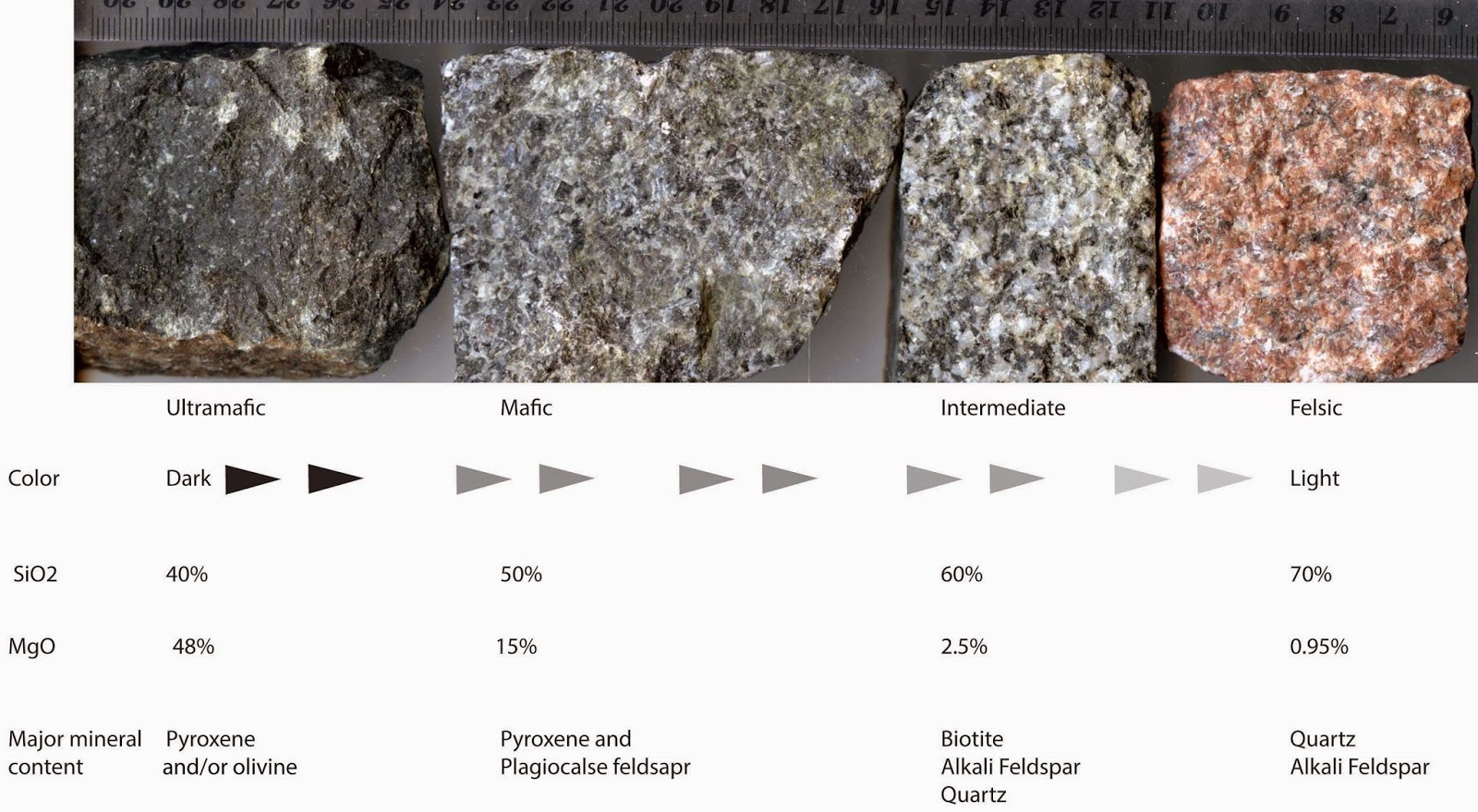

en.wikipedia.org/wiki/Volcanic_gas
The principal components of volcanic gases are water vapor (H2O), carbon dioxide (CO2), sulfur either as sulfur dioxide (SO2) (high-temperature volcanic gases) or hydrogen sulfide (H2S) (low-temperature volcanic gases), nitrogen, argon, helium, neon, methane, carbon monoxide and hydrogen. Other compounds detected in volcanic gases are oxygen (meteoric), hydrogen chloride, hydrogen fluoride, hydrogen bromide, nitrogen oxide (NOx), sulfur hexafluoride, carbonyl sulfide, and organic compounds. Exotic trace compounds include mercury, halocarbons (including CFCs), and halogen oxide radicals.
The abundance of gases varies considerably from volcano to volcano. Water vapour is consistently the most common volcanic gas, normally comprising more than 60% of total emissions. Carbon dioxide typically accounts for 10 to 40% of emissions.[1]
Volcanoes located at convergent plate boundaries emit more water vapor and chlorine than volcanoes at hot spots or divergent plate boundaries. This is caused by the addition of seawater into magmas formed at subduction zones. Convergent plate boundary volcanoes also have higher H2O/H2, H2O/CO2, CO2/He and N2/He ratios than hot spot or divergent plate boundary volcanoes.[1]
The principal components of volcanic gases are water vapor (H2O), carbon dioxide (CO2), sulfur either as sulfur dioxide (SO2) (high-temperature volcanic gases) or hydrogen sulfide (H2S) (low-temperature volcanic gases), nitrogen, argon, helium, neon, methane, carbon monoxide and hydrogen. Other compounds detected in volcanic gases are oxygen (meteoric), hydrogen chloride, hydrogen fluoride, hydrogen bromide, nitrogen oxide (NOx), sulfur hexafluoride, carbonyl sulfide, and organic compounds. Exotic trace compounds include mercury, halocarbons (including CFCs), and halogen oxide radicals.
The abundance of gases varies considerably from volcano to volcano. Water vapour is consistently the most common volcanic gas, normally comprising more than 60% of total emissions. Carbon dioxide typically accounts for 10 to 40% of emissions.[1]
Volcanoes located at convergent plate boundaries emit more water vapor and chlorine than volcanoes at hot spots or divergent plate boundaries. This is caused by the addition of seawater into magmas formed at subduction zones. Convergent plate boundary volcanoes also have higher H2O/H2, H2O/CO2, CO2/He and N2/He ratios than hot spot or divergent plate boundary volcanoes.[1]
Small amounts of substances known as "mineralizers" influence the fluidity and temperatures at which various minerals crystallize:
Water Vapor, carbon dioxide, fluorine, boric acid, sulfur, and chlorine.
Only in the presence of water vapor, which lowers the temperature of crystallization, can quartz, orthoclase, and albite (granite, andesite) be formed.
Without it (dry fusion) only uncrystallized glass (obsidian) is formed.


